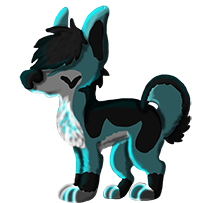Username: Liegion.
Dragon name: Retto
Gender: Male
What does this dragon most remind you of?: A coconut!
-

Liegion. - Posts: 1267
- Joined: Sun Dec 23, 2012 7:13 am
- My pets
- My items
- My wishlist
- My gallery
- My scenes
- My dressups
- Trade with me
Re: JBD #396
Username:Cane
Dragon name:Pine
Gender:Male
What does this dragon most remind you of?:He reminds me of autumn leaves
Dragon name:Pine
Gender:Male
What does this dragon most remind you of?:He reminds me of autumn leaves
★彡 《 adult || digital artist
-

Cane - Posts: 5672
- Joined: Thu Jan 21, 2010 11:02 am
- My pets
- My items
- My wishlist
- My gallery
- My scenes
- My dressups
- Trade with me
Re: JBD #396
Username:
- froggy & A-list
- Bramble
- Male
- He reminds me of assorted poppycot- the candied pop corn with a mint drizzle ^^
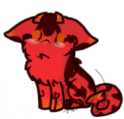
❝sᴄʜᴏᴏʟ ᴛᴏᴏᴋ ᴏᴠᴇʀ ᴡʜᴇɴ ᴘᴇᴏᴘʟᴇ ᴅᴇᴘᴇɴᴅᴇᴅ ᴏɴ ᴍᴇ ᴍᴏsᴛ, ɴᴏᴡ sᴜᴍᴍᴇʀ ғʀᴇᴇs ᴍʏ ʀᴇɪɴs
ᴛᴏ ᴅᴏ ᴀs ɪ ᴘʟᴇᴀsᴇ, ᴀɴᴅ ʜᴇʟᴘ ᴡʜᴏ ʜᴀᴠᴇ ʙᴇᴇɴ ғᴏʀɢᴏᴛᴛᴇɴ ɪɴ ᴍʏ ᴏᴡɴ ᴄʟᴏᴜᴅᴇᴅ ᴘᴀᴛʜ.❞
ᴛᴏ ᴅᴏ ᴀs ɪ ᴘʟᴇᴀsᴇ, ᴀɴᴅ ʜᴇʟᴘ ᴡʜᴏ ʜᴀᴠᴇ ʙᴇᴇɴ ғᴏʀɢᴏᴛᴛᴇɴ ɪɴ ᴍʏ ᴏᴡɴ ᴄʟᴏᴜᴅᴇᴅ ᴘᴀᴛʜ.❞
-

. : Milotic : . - Posts: 6245
- Joined: Sat Aug 20, 2011 12:26 pm
- My pets
- My items
- My wishlist
- My gallery
- My scenes
- My dressups
- Trade with me
Re: JBD #396
Username: Flowerdust
Dragon name: Kato... African Lugandan name meaning "second-born twin."
Gender: Male
What does this dragon most remind you of?: The African Savannah with its lush grasses and dry desert
Dragon name: Kato... African Lugandan name meaning "second-born twin."
Gender: Male
What does this dragon most remind you of?: The African Savannah with its lush grasses and dry desert
-

Flowerdust - Posts: 4530
- Joined: Mon Nov 28, 2011 12:43 pm
- My pets
- My items
- My wishlist
- My gallery
- My scenes
- My dressups
- Trade with me
Re: JBD #396
Username: copper96
Dragon name: Rinji
Gender: Male
What does this dragon most remind you of?: a Kapok Tree
Dragon name: Rinji
Gender: Male
What does this dragon most remind you of?: a Kapok Tree


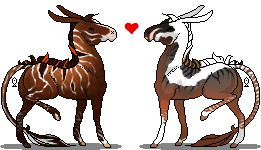
-

CopperChaos - Posts: 4001
- Joined: Tue Dec 21, 2010 2:32 pm
- My pets
- My items
- My wishlist
- My gallery
- My scenes
- My dressups
- Trade with me
Re: JBD #396
Username: Scissors
Dragon name: Sprig
Gender: Male
What does this dragon most remind you of?: Spring, all the drown reminds me of the fresh dirt after the snow is all melted ^^ And the little hints of green could also mean the bugs growing on a naked tree. His red eye reminds me of the bright and warm sun.
Dragon name: Sprig
Gender: Male
What does this dragon most remind you of?: Spring, all the drown reminds me of the fresh dirt after the snow is all melted ^^ And the little hints of green could also mean the bugs growing on a naked tree. His red eye reminds me of the bright and warm sun.
-

Vegtaboom - Posts: 31349
- Joined: Mon Feb 27, 2012 3:56 pm
- My pets
- My items
- My wishlist
- My gallery
- My scenes
- My dressups
- Trade with me
Re: JBD #396
Username:
Samwise Gamgee
Dragon name:
Verte
Gender:
Female
What does this dragon most remind you of?:
The beginning of autumn in a dark murky forest where the deep green leaves are turning brown<3
Samwise Gamgee
Dragon name:
Verte
Gender:
Female
What does this dragon most remind you of?:
The beginning of autumn in a dark murky forest where the deep green leaves are turning brown<3






-
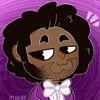
garnet. - Posts: 29158
- Joined: Fri Nov 25, 2011 6:50 am
- My pets
- My items
- My wishlist
- My gallery
- My scenes
- My dressups
- Trade with me
Re: JBD #396
Username: Serenade By Angels
Dragon name: Kyosuke
Gender: male
What does this dragon most remind you of?:
He reminds me of a Modern Art painting. The colors and the design have contrast, yet flow and go well together. They flow in perfect harmony, yet give a disheveled appearence. It speaks to the soul without words.
Dragon name: Kyosuke
Gender: male
What does this dragon most remind you of?:
He reminds me of a Modern Art painting. The colors and the design have contrast, yet flow and go well together. They flow in perfect harmony, yet give a disheveled appearence. It speaks to the soul without words.
do you suffer from panic or anxiety attacks? Come see the plushies I sell
Come join this discord warrior cat RP! We are having a contest!
I do get on occasionally.
Come join this discord warrior cat RP! We are having a contest!
I do get on occasionally.
.
╭xxxxxxSurvivorxxxxxx╮
I have had to take a couple years off of CS due to real life things. But im slowly getting back here now.
╰xxxxxxxxxxxxxxxxxx╯



I was beaten, bruised, abused, and yet I survived. I spoke up. Let others hear your voice. Fight. Be a warrior. Be a SURVIVOR.
 no one understands what Post Traumatic Stress Disorder is. Unless you have it yourself.
no one understands what Post Traumatic Stress Disorder is. Unless you have it yourself.
Please, be aware that not all wounds are visible.
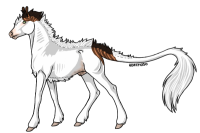
[/left]╭xxxxxxSurvivorxxxxxx╮
I have had to take a couple years off of CS due to real life things. But im slowly getting back here now.
╰xxxxxxxxxxxxxxxxxx╯


I was beaten, bruised, abused, and yet I survived. I spoke up. Let others hear your voice. Fight. Be a warrior. Be a SURVIVOR.

 no one understands what Post Traumatic Stress Disorder is. Unless you have it yourself.
no one understands what Post Traumatic Stress Disorder is. Unless you have it yourself.Please, be aware that not all wounds are visible.


-

.Survivor. - Posts: 13235
- Joined: Sat Feb 19, 2011 9:40 am
- My pets
- My items
- My wishlist
- My gallery
- My scenes
- My dressups
- Trade with me
Re: JBD #396
Username:
NightGaze, but I prefer that you call me Night.
Dragon name:
Nima
Gender:
Nima would be a female, because of her red eyes.
What does this dragon most remind you of?:
Nima reminds me of a neurological condition, called Synesthesia. This is where you see a color, when you hear a sound or word. She reminds me of this, for two reasons. One, is her colors. Her coat reminds me of what a Synesthesiast might see. Different swirls of color, as words flow from soneone's mouth. A friend of mine, who has Synesthesia, actually told me what the name Nima looks to her. It is a dark woody color, with green streaks. Perfect, for this bean. Sadly, there is no red in it. Yet the name Nita, is a dark woody color, with red instead of green.
NightGaze, but I prefer that you call me Night.
Dragon name:
Nima
Gender:
Nima would be a female, because of her red eyes.
What does this dragon most remind you of?:
Nima reminds me of a neurological condition, called Synesthesia. This is where you see a color, when you hear a sound or word. She reminds me of this, for two reasons. One, is her colors. Her coat reminds me of what a Synesthesiast might see. Different swirls of color, as words flow from soneone's mouth. A friend of mine, who has Synesthesia, actually told me what the name Nima looks to her. It is a dark woody color, with green streaks. Perfect, for this bean. Sadly, there is no red in it. Yet the name Nita, is a dark woody color, with red instead of green.
Some facts, about Synesthesia.
Synesthesia (also spelled synæsthesia or synaesthesia, plural synesthesiæ or synæsthesiæ), from the ancient Greek σύν (syn), "together," and αἴσθησις (aisthēsis), "sensation," is a neurological condition in which stimulation of one sensory or cognitive pathway leads to automatic, involuntary experiences in a second sensory or cognitive pathway. People who report such experiences are known as synesthetes. Recently, difficulties have been recognized in finding an adequate definition of synesthesia, as many different phenomena have been covered by this term and in many cases the term synesthesia ("union of senses") seems to be a misnomer. A more accurate term for the phenomenon may be ideasthesia.
In one common form of synesthesia, known as grapheme → color synesthesia or color-graphemic synesthesia, letters or numbers are perceived as inherently colored, while in ordinal linguistic personification, numbers, days of the week and months of the year evoke personalities. In spatial-sequence, or number form synesthesia, numbers, months of the year, and/or days of the week elicit precise locations in space (for example, 1980 may be "farther away" than 1990), or may have a (three-dimensional) view of a year as a map (clockwise or counterclockwise). Yet another recently identified type, visual motion → sound synesthesia, involves hearing sounds in response to visual motion and flicker. Over 60 types of synesthesia have been reported, but only a fraction have been evaluated by scientific research. Even within one type, synesthetic perceptions vary in intensity and people vary in awareness of their synesthetic perceptions.
While cross-sensory metaphors (e.g., "loud shirt," "bitter wind" or "prickly laugh") are sometimes described as "synesthetic", true neurological synesthesia is involuntary. It is estimated that synesthesia could possibly be as prevalent as 1 in 23 persons across its range of variants. Synesthesia runs strongly in families, but the precise mode of inheritance has yet to be ascertained. Synesthesia is also sometimes reported by individuals under the influence of psychedelic drugs, after a stroke, during a temporal lobe epilepsy seizure, or as a result of blindness or deafness. Synesthesia that arises from events after birth is referred to as "adventitious synesthesia" to distinguish it from the more common congenital forms of synesthesia. Adventitious synesthesia involving drugs or stroke (but not blindness or deafness) apparently only involves sensory linkings such as sound → vision or touch → hearing; there are few, if any, reported cases involving culture-based, learned sets such as graphemes, lexemes, days of the week, or months of the year.
Although synesthesia was the topic of intensive scientific investigation in the late 19th century and early 20th century, it was largely abandoned by scientific research in the mid-20th century, and has only recently been rediscovered by modern researchers. Psychological research has demonstrated that synesthetic experiences can have measurable behavioral consequences, while functional neuroimaging studies have identified differences in patterns of brain activation. Many people with synesthesia use their experiences to aid in their creative process, and many non-synesthetes have attempted to create works of art that may capture what it is like to experience synesthesia. Psychologists and neuroscientists study synesthesia not only for its inherent interest, but also for the insights it may give into cognitive and perceptual processes that occur in synesthetes and non-synesthetes alike.
Copied off of Wikipedia, found here
Synesthesia (also spelled synæsthesia or synaesthesia, plural synesthesiæ or synæsthesiæ), from the ancient Greek σύν (syn), "together," and αἴσθησις (aisthēsis), "sensation," is a neurological condition in which stimulation of one sensory or cognitive pathway leads to automatic, involuntary experiences in a second sensory or cognitive pathway. People who report such experiences are known as synesthetes. Recently, difficulties have been recognized in finding an adequate definition of synesthesia, as many different phenomena have been covered by this term and in many cases the term synesthesia ("union of senses") seems to be a misnomer. A more accurate term for the phenomenon may be ideasthesia.
In one common form of synesthesia, known as grapheme → color synesthesia or color-graphemic synesthesia, letters or numbers are perceived as inherently colored, while in ordinal linguistic personification, numbers, days of the week and months of the year evoke personalities. In spatial-sequence, or number form synesthesia, numbers, months of the year, and/or days of the week elicit precise locations in space (for example, 1980 may be "farther away" than 1990), or may have a (three-dimensional) view of a year as a map (clockwise or counterclockwise). Yet another recently identified type, visual motion → sound synesthesia, involves hearing sounds in response to visual motion and flicker. Over 60 types of synesthesia have been reported, but only a fraction have been evaluated by scientific research. Even within one type, synesthetic perceptions vary in intensity and people vary in awareness of their synesthetic perceptions.
While cross-sensory metaphors (e.g., "loud shirt," "bitter wind" or "prickly laugh") are sometimes described as "synesthetic", true neurological synesthesia is involuntary. It is estimated that synesthesia could possibly be as prevalent as 1 in 23 persons across its range of variants. Synesthesia runs strongly in families, but the precise mode of inheritance has yet to be ascertained. Synesthesia is also sometimes reported by individuals under the influence of psychedelic drugs, after a stroke, during a temporal lobe epilepsy seizure, or as a result of blindness or deafness. Synesthesia that arises from events after birth is referred to as "adventitious synesthesia" to distinguish it from the more common congenital forms of synesthesia. Adventitious synesthesia involving drugs or stroke (but not blindness or deafness) apparently only involves sensory linkings such as sound → vision or touch → hearing; there are few, if any, reported cases involving culture-based, learned sets such as graphemes, lexemes, days of the week, or months of the year.
Although synesthesia was the topic of intensive scientific investigation in the late 19th century and early 20th century, it was largely abandoned by scientific research in the mid-20th century, and has only recently been rediscovered by modern researchers. Psychological research has demonstrated that synesthetic experiences can have measurable behavioral consequences, while functional neuroimaging studies have identified differences in patterns of brain activation. Many people with synesthesia use their experiences to aid in their creative process, and many non-synesthetes have attempted to create works of art that may capture what it is like to experience synesthesia. Psychologists and neuroscientists study synesthesia not only for its inherent interest, but also for the insights it may give into cognitive and perceptual processes that occur in synesthetes and non-synesthetes alike.
Copied off of Wikipedia, found here
Edit 1: Added facts.
Edit 2: Fixed some stuff up. There were random numbers everywhere, which I fixed.
Edit 3: Missed a few numbers. Fixed.
Last edited by NightGaze on Fri Mar 01, 2013 10:10 am, edited 3 times in total.
Quitting CS, giving away all pets/items
-

NightGaze - Posts: 2701
- Joined: Fri Aug 17, 2012 9:15 am
- My pets
- My items
- My wishlist
- My gallery
- My scenes
- My dressups
- Trade with me
Re: JBD #396
Username:.:Rose:.
Dragon name:
Almasiga
( pistachio in filipino)
Gender:
male
What does this dragon most remind you of?:
Frankly, he reminds me of a pistachio. The browns are the shell and the green is a perfect pistachio color."Yum~"
Dragon name:
Almasiga
( pistachio in filipino)
Gender:
male
What does this dragon most remind you of?:
Frankly, he reminds me of a pistachio. The browns are the shell and the green is a perfect pistachio color."Yum~"



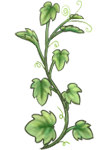

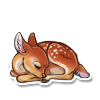

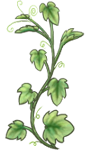
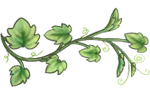

-

Goosecheese - Posts: 4099
- Joined: Fri Nov 11, 2011 1:39 pm
- My pets
- My items
- My wishlist
- My gallery
- My scenes
- My dressups
- Trade with me
Who is online
Users browsing this forum: CopperChaos, Flicka, Kitsyn, Nalena, zero.two and 30 guests










